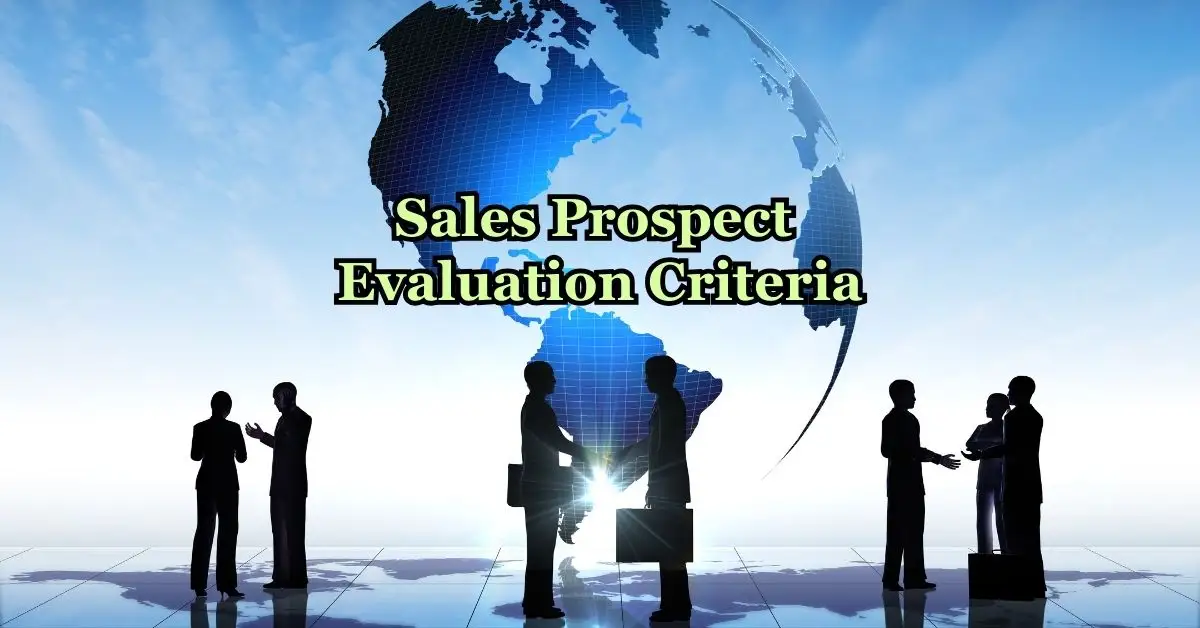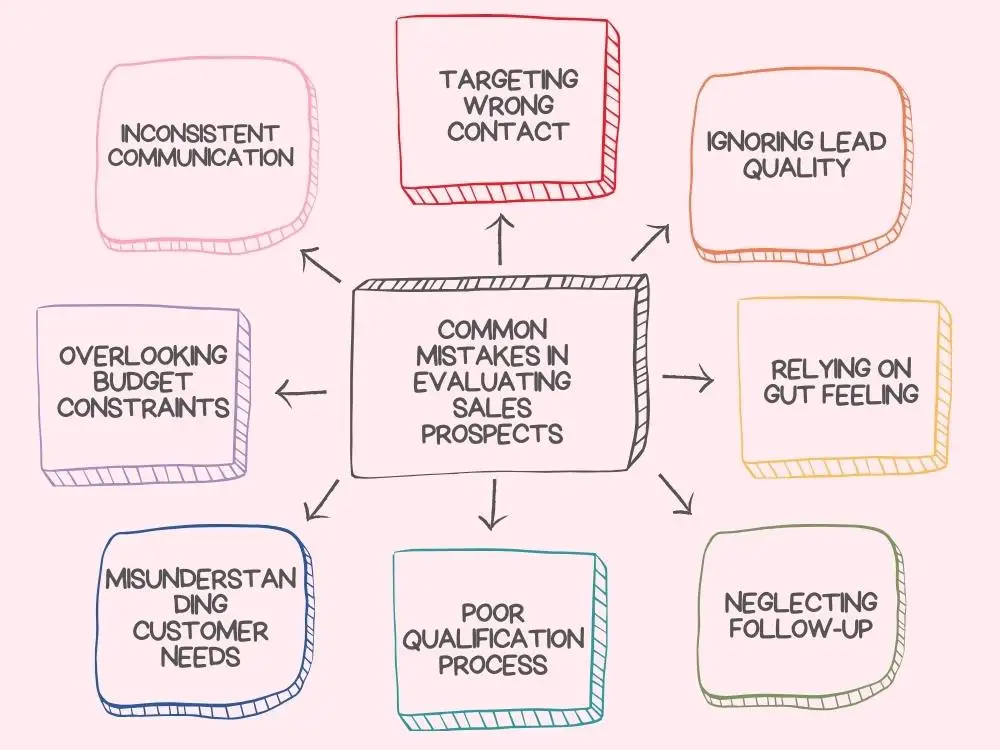
Sales Prospect Evaluation Criteria: A Data-Driven Approach to Closing Deals
Do you know why some sales teams hit their targets while others miss? The reason is not all leads are created equal. All smart companies realize that when they have well-defined sales prospect evaluation criteria, it can be the difference between a healthy sales pipeline and missed opportunities.
By carefully screening potential customers, companies can easily weed out worthless leads from potentially fruitful ones, which helps avoid wasting precious time and resources on them. Moreover, data can provide them crucial insights regarding those prospects that are most likely to purchase. This aids sales teams in concentrating their efforts and closing more deals.
Moreover, modern data analytics is an ally to salespeople, which is a powerful tool to cut through the noise and focus on the right opportunities.
Key Takeaways
- Understand what is sales prospect evaluation and the key criteria for evaluating it.
- Know the role of data in sales prospect evaluation and some vital evaluation frameworks like BANT, CHAMP & MEDDIC.
- Learn how to score and prioritize leads efficiently.
- Recognize the common mistakes in evaluating sales prospects.
- Understand the role of predictive analytics and the utilization of a probability calculator in lead evaluation.
What is Sales Prospect Evaluation?
The sales prospect evaluation is an effective way to decide which potential customers are worth talking to. It's similar to sifting through thousands of resumes to find the ideal job candidate. At the end of the day, your salespeople won't waste time pursuing leads that are never converting.

You can quickly discern the most qualified prospects by identifying a few key factors such as company size, budget, need for your product, etc. This is all about smart time management. Instead of talking to everyone, you talk to the people who are most likely to say yes. This will increase sales and decrease frustration for your team.
Key Criteria for Evaluating Sales Prospects
Finding great sales prospects needs careful evaluation, you've got to look beyond just who answers the phone. Here are the seven important factors that separate promising leads from dead ends:
- Budget: Can they actually afford what you're selling? You have to understand that it's no point pitching a Rolls-Royce to someone driving a used bicycle.
- Authority: Are you talking to the person who can say "yes" and write the check? Talking to someone without decision-making power is an utter waste of time.
- Need: Do they truly need your solution? Sometimes prospects don't know they need something until you show them how it solves a real problem.
- Timeline: When are they looking to buy? Some leads are ready to buy now while others are just window-shopping months in advance.
- Engagement Level: Are they ghosting you or actually interested? Quick responses and genuine questions are good signs.
- Pain Points & Urgency: Does your product fix a problem that's keeping them up at night? The more urgent the pain, the faster they'll buy.
- Competitor Consideration: You have to figure out who else your prospects are talking to. Understanding the competition helps you craft a winning pitch.
The Role of Data in Sales Prospect Evaluation
Sales used to be a guessing game. Now, you've got tools that help you pick the right customers easily. Your CRM is basically a treasure map of potential sales. It tracks who talks to you and how they respond. This is vital to figure out which types of customers are most likely to buy. Just think of it like having a cheat sheet that shows you exactly where to focus.

Moreover, by looking at past sales (historical data), you can identify sales patterns. This will answer the questions such as which customers bought quickly? What industries seem to love our product? This identification is crucial to learn from your own playbook where you know what works because you've seen it work before.
And with the help of smart AI technology, you can now spot opportunities faster than ever. Instead of chasing every lead, you can filter the ones who are most likely to say yes.
Sales Prospect Evaluation Frameworks
Not all sales frameworks are created equal. Think of these as different playbooks for finding your ideal customer. Let’s see some vital frameworks:
1) BANT: This is a classic approach (Budget, Authority, Need, and Timeline). A very simple checklist for determining whether or not a prospect is worth your time. Quickly run through questions such as: Can they pay (budget)? Can they even make a decision (authority)? Do they need what you are selling (need)? And are they ready to buy soon (timeline)?
2) CHAMP: A subtle twit to BANT. First understand the customer's challenge. What are they trying to solve? Then, you can check whether they have authority, money, and priority to move forward. It's all about being empathetic before selling the idea.
3) MEDDIC: The most detailed framework. This is for complex sales with lots of moving parts. You dive deep into:
- Metrics: What specific results does the customer want?
- Economic Buyer: Who actually controls the budget?
- Decision Criteria: How will they choose a solution?
- Decision Process: What steps do they go through to buy?
- Identify Pain: What's really bothering them?
- Champion: Who inside the company will fight for your solution?
How to Score and Prioritize Leads Efficiently
Lead scoring is similar to creating a "report card" for the potential customers who are identified in your marketing database. Points are assigned per qualification or characteristic where you can easily assess the worthiness of a lead.
Here's how it works. Each prospect gets points based on specific criteria. For example:
- Company size: 0-10 points
- Budget: 0-15 points
- Previous interaction: 0-10 points
- Job title of contact: 0-5 points
- Industry fit: 0-10 points
A real-world example:
Let's say a B2B software company uses this scoring system. Leads scoring above 30 points are considered hot, 20-30 are warm, and below 20 are cold.
The numbers back this up. According to Gartner, companies using lead scoring can see a 10% increase in revenue and a 15-20% boost in marketing-sales alignment. Another study by Hubspot found that businesses using lead scoring saw a 77% increase in lead generation ROI.
Moreover, modern lead scoring software automates this entire process. Instead of manual tracking, these tools quickly evaluate and rank leads. This helps sales teams focus their energy where it matters most.
Common Mistakes in Evaluating Sales Prospects
You should be careful when evaluating sales prospects. Sales teams often stumble into these pitfalls that can sink their potential deals. Let's have a look at some potential mistakes that you should avoid:

- Targeting Wrong Contact: If you talk to someone who has no authority or decision-making power, it wastes everyone's time. Always aim for the person who can actually sign the contract.
- Ignoring Lead Quality: Not all leads are created equal. If you chase every potential customer, it may dilute your efforts and burn valuable resources.
- Relying on Gut Feeling: Your intuition alone doesn't close deals. Data and systematic evaluation are significant to consider.
- Neglecting Follow-up: One initial conversation isn't enough. Consistent follow-up is what separates successful sales from missed opportunities.
- Poor Qualification Process: If you don't have a clear system to evaluate prospects, you're basically throwing darts blindfolded.
- Misunderstanding Customer Needs: If you assume that you know what a customer wants without listening deeply, it will be a fast track to rejection.
- Overlooking Budget Constraints: Just because someone likes your product doesn't mean they can afford it. You should always understand financial boundaries early.
- Inconsistent Communication: Sporadic or unprofessional communication signals to prospects that you might be unreliable.
Statistical reports say that sales teams avoiding these pitfalls see an improvement in conversion rates by up to 40%. This helps reduce the amount of wasted sales effort in the process.
The Role of Predictive Analytics
Predictive analytics is a useful model that changes the way teams recognize and convert prospects. By combining a vast amount of historical data with machine learning and advanced algorithms, these new techniques can now predict sales outcomes with incredible accuracy.
Key components of predictive sales analytics include:
- Behavioral pattern recognition
- Predictive lead scoring
- Customer lifetime value estimation
- Churn risk assessment
- Personalized engagement strategies
These techniques are beyond the traditional modes of evaluation where sales teams could gain a more profound view into the prospect potential. Moreover, understanding not just who might buy but why and when is important. This approach greatly helps teams develop a better-targeted and more efficient sales strategy.
Using a Probability Calculator for Lead Evaluation
Understanding the mathematical probability of a potential sale can change how sales teams approach lead evaluation. Our Probability Calculator offers a straightforward way to quantify your chances of success. So, how does the Calculator Work?
The tool is simple but powerful. You'll input two key pieces of information:
- Total number of possible outcomes
- Number of favorable events (successful outcomes)
For example, in a sales context:
- Total possible outcomes might be 100 leads contacted
- Favorable events could be 25 leads that converted to sales
By just entering these figures, you can obtain a timely and entirely accurate probability percentage which is like this:
- No of possible leads that converted to sale: 0.25
- No of possible leads that don’t convert to sale: 0.75
This simple probability calculation helps sales teams harness data in their decision-making, set realistic expectations, optimize the use of resources, and understand the real conversion potential of leads.
Wrapping Up
Data-driven sales prospect evaluation leaves no room for guesswork. By employing proven frameworks, staying clear of common pitfalls, and utilizing helpful tools such as probability calculators, sales teams can drastically improve conversion rates. This means more deals closed without wasting effort.
FAQs
Q1: How long should I pursue a lead before categorizing it as cold?
Follow up 5-7 times over 2-3 weeks before marking a lead cold. High-value prospects in complex industries may deserve more persistence, but know when to redirect your energy to more promising opportunities.
Q2: Can sales prospect evaluation criteria vary by industry?
Yes. While BANT and similar frameworks work universally, your specific industry needs unique qualifiers. For example, SaaS companies prioritize tech compatibility, manufacturers focus on equipment lifecycles, luxury retailers emphasize purchasing patterns, and other industries have some unique evaluation criteria.
Explore Related Posts
https://smarttoolsai.com/post/the-4ps-of-marketing-game-changer-for-your-business-success
https://smarttoolsai.com/post/ip-addresses-and-geolocation-for-customer-targeting
.webp)